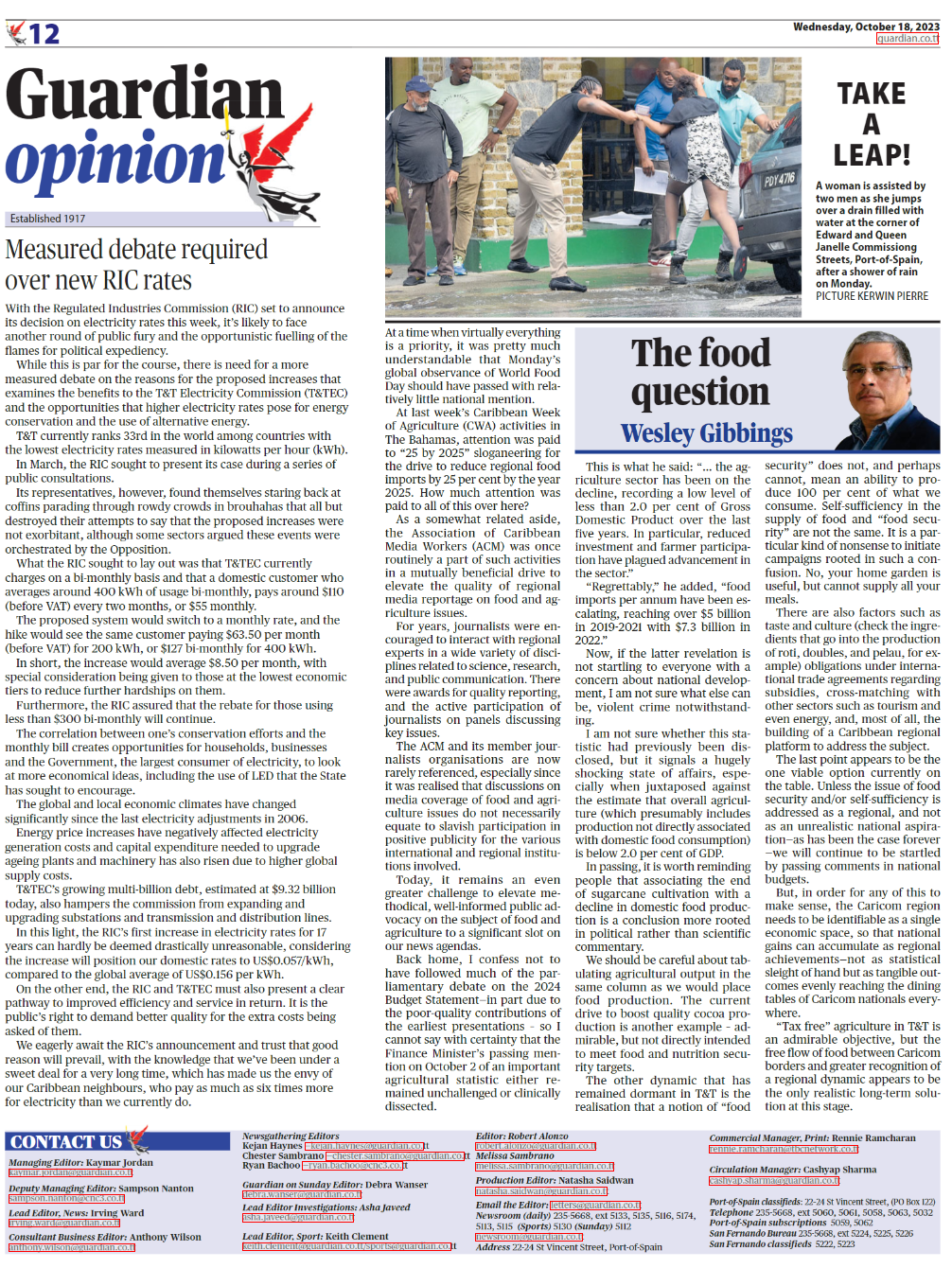Measured debate required over new RIC rates
With the Regulated Industries Commission (RIC) set to announce its
decision on electricity rates this week, it’s likely to face another round of
public fury and the opportunistic fuelling of the flames for political
expediency.
While this is par for the course, there is need for a more measured debate
on the reasons for the proposed increases that examines the benefits to
the T&T Electricity Commission (T&TEC) and the opportunities that higher
electricity rates pose for energy conservation and the use of alternative
energy.
T&T currently ranks 33rd in the world among countries with the lowest
electricity rates measured in kilowatts per hour (kWh).
In March, the RIC sought to present its case during a series of public
consultations.
Its representatives, however, found themselves staring back at coffins
parading through rowdy crowds in brouhahas that all but destroyed their
attempts to say that the proposed increases were not exorbitant, although
some sectors argued these events were orchestrated by the Opposition.
What the RIC sought to lay out was that T&TEC currently charges on a bimonthly basis and that a domestic customer who averages around 400
kWh of usage bi-monthly, pays around $110 (before VAT) every two
months, or $55 monthly.
The proposed system would switch to a monthly rate, and the hike would
see the same customer paying $63.50 per month (before VAT) for 200
kWh, or $127 bi-monthly for 400 kWh.
In short, the increase would average $8.50 per month, with special
consideration being given to those at the lowest economic tiers to reduce
further hardships on them.
Furthermore, the RIC assured that the rebate for those using less than $300 bi-monthly will continue.
The correlation between one’s conservation efforts and the monthly bill
creates opportunities for households, businesses and the Government, the
largest consumer of electricity, to look at more economical ideas, including
the use of LED that the State has sought to encourage.
The global and local economic climates have changed significantly since
the last electricity adjustments in 2006.
Energy price increases have negatively affected electricity generation costs
and capital expenditure needed to upgrade ageing plants and machinery
has also risen due to higher global supply costs.
T&TEC’s growing multi-billion debt, estimated at $9.32 billion today, also
hampers the commission from expanding and upgrading substations and
transmission and distribution lines.
In this light, the RIC’s first increase in electricity rates for 17 years can
hardly be deemed drastically unreasonable, considering the increase will
position our domestic rates to US$0.057/kWh, compared to the global
average of US$0.156 per kWh.
On the other end, the RIC and T&TEC must also present a clear pathway to
improved efficiency and service in return. It is the public’s right to
demand better quality for the extra costs being asked of them.
We eagerly await the RIC’s announcement and trust that good reason will
prevail, with the knowledge that we’ve been under a sweet deal for a very
long time, which has made us the envy of our Caribbean neighbours, who
pay as much as six times more for electricity than we currently do.

